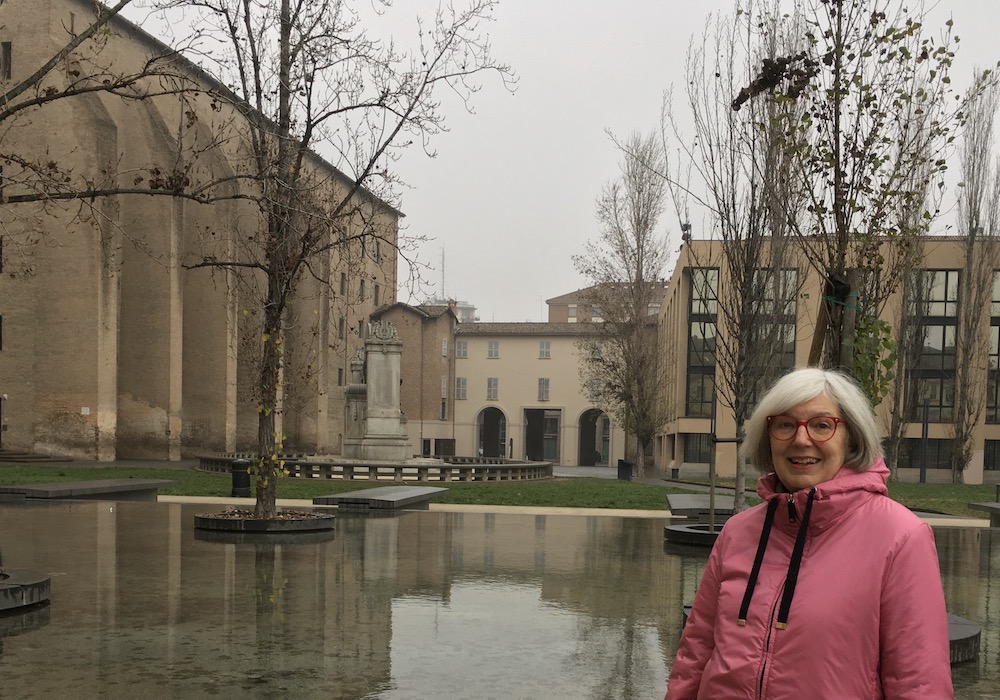If each city is like a game of chess, the day when I have learned the rules, I shall finally possess my empire, even if I shall never succeed in knowing all the cities it contains.
—Italo Calvino, Invisible Cities
Can you describe the mood of Amman as you feel/see it?
Amman has a neutral energy that can seem strange and disconcerting when you consider that it’s surrounded by countries where big things are happening, and yet somehow nothing seem to be happening here. But in fact, there are things simmering beneath the surface and waiting for the right time to reveal themselves. There is a noisy kind of cluttered quiet that exists in this city.
What is your most heartbreaking memory in this city?
My mother’s memory—when she tells me stories about what life used to be like, their sense of community, and how life was simpler and closer to the earth. She also reminisces about a time when she could travel to Jericho freely, before the Jordan River was divided and became a border. Every time she tells me these stories, I feel heartbroken and wish we could return—not go backwards, but take the good things from our past and combine them with the good things of the present, and create a new place where everyone can live together harmoniously.
What is the most extraordinary detail, one that goes unnoticed by most, of the city?
The pure potential that exists here—the desert’s neutral energy is perfect to create almost whatever you want, especially if you go about things the right way. And this city is full of beautiful and interesting people working on amazing artistic and cultural projec
What writer(s) from here should we read?
Aysha Shamayleh and Samar Dudin.
Is there a place here you return to often?
Downtown Amman.
Is there an iconic literary place we should know?
Not yet but soon…
Are there hidden cities within this city that have intrigued or seduced you?
There are many elements of this city that are intriguing, intertwined with the landscape, hidden beneath the surface. For instance, Webdeh has a rich and intellectual history that still exists in many ways but not in the way I have heard it described. The older generation have interesting stories about the place. There is also the hidden history, and the traditional ways many cultures have lived on this land. Rami Sajdi discusses specifically the shamanistic and medicinal ways of these cultures.
Where does passion live here?
Passion lives in pockets and dark little corners here. It lives hidden deep inside people who find themselves numb due to the monotony of social norms and their routines. It lives within a growing community of artists—filmmakers, musicians, visual artists, poets—people who are finally beginning to really express themselves. In Jordan, the revolution is not happening on the streets, it is happening through the lens and the pen and the instruments of the artists. While we have not yet really seen what is inside its people, it is gradually coming out in surprising ways.
What is the title of one of your works about Amman and what inspired it exactly?
My screenplay Swimming Over Jordan is an experimental documentary film that explores the internal and external struggles of the main character’s (myself) attempt to cross the border to Palestine. While it is not exactly about Amman, the city does play an integral role in the film as it is the city that I live in and go back to. It is also a city that has become a shelter for many refugees and it’s interesting how that’s manifested in small ways all over the city.
Inspired by Levi, “Outside Amman does an outside exist?”
The deserts. They are the real jewels of Jordan. Part of the gift of living here is finding quiet inspiration in the desert and coming back to face the city with all of its contradictions and intensity.
Deema Dabis is a writer, screenwriter, and cinematic storyteller. She received her BA in Journalism and an MFA in Cinema from the Red Sea Institute of Cinematic Arts. She is currently working on the short film The Sri Lankan, which received funding from the Jordan Film Fund, and developing two film projects, Swimming Over Jordan and Shake, which was accepted into the development workshop Med Film Factory. She is the co-founder of the Fajr Falastine Film Collective—a groundbreaking initiative where crowd-funding meets online distribution meets experimental independent cinema meets important stories from the Arab world; an experimental film studio, collective and fund. The goal is to promote, support, fund and distribute unique and genre-defying film projects from the Arab world with a particular focus on Palestine.
Fajr Falastine Film Collective releases its first film Mars at Sunrise, inspired by artist-in-exile Hani Zurob, this Friday, February 7, 2014 in New York City at Quad Theatre.
“Mars at Sunrise is, quite simply, an extraordinary and moving film… one of the first true indie gems to hit theaters in 2014.” –Richard Propes, The Independent Critic











